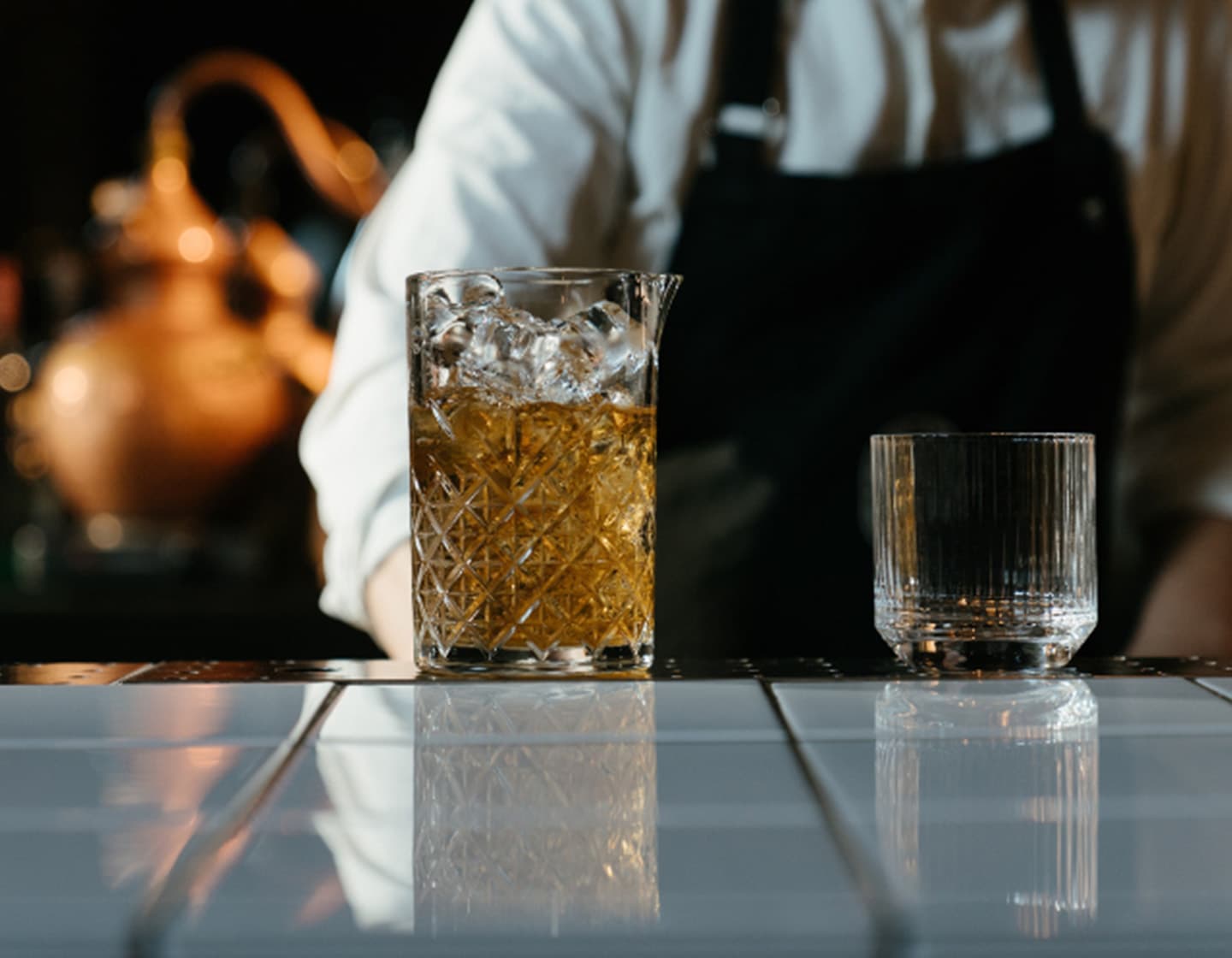Mixing Glass
If you’ve ever enjoyed a velvety smooth Manhattan or a crystal clear Martini, it’s likely your bartender prepared it using a Mixing Glass. A cornerstone of the cocktail craft, the mixing glass is often overlooked but stands as a testament to the artistry of mixology. Join us as we look into the history of this essential tool, its various forms, and the nuances that define its use.
Estimated reading time: 5 minutes
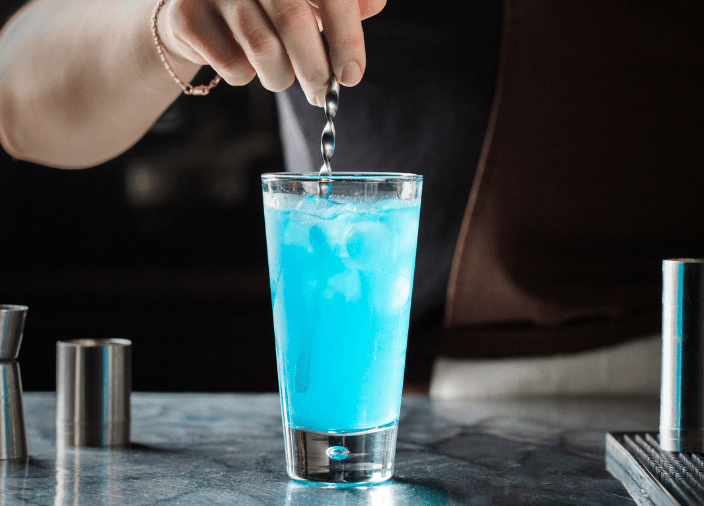
History of the Mixing Glass
The emergence of the mixing glass is directly tied to the rise of cocktail culture. While cocktails have been enjoyed for centuries, the late 19th and early 20th centuries witnessed a boom in cocktail culture, especially in the United States. With the Golden Age of Cocktails upon them, bartenders sought tools that not only performed well but also looked appealing to their patrons.
Earlier, many bartenders used a two-piece shaker to mix and chill drinks. However, as cocktails became more sophisticated, especially those that required gentle stirring instead of shaking, the mixing glass found its place in the bartender's arsenal. (Wondrich, 2007)
Throughout much of the latter 20th century, the classic pint glass style mixing glass was common in western bars however in tandem, Japanese bartenders, with their focus on precise technique and quality equipment had developed a range of more sophisticated barware. “Japanese style” equipment took the bartending world by storm in the early 21st century and has come to define the modern “craft cocktail” movement to such an extent that you’d be hard pressed to find a serious bar without at least one cut glass (or “Yarai”) style mixing glass.
Types of Mixing Glasses
Over time, this tool has evolved, presenting a variety of styles, each refined to serve a specific purpose or aesthetic.
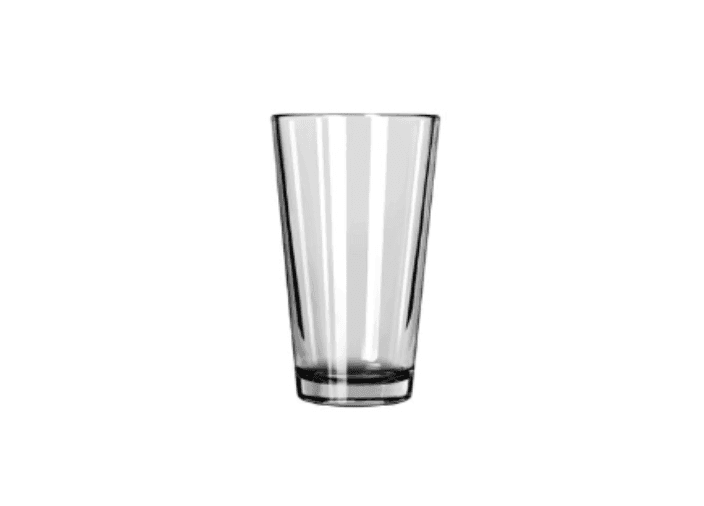
Classic Mixing Glass
The traditional design is a simple, slightly tapered glass, akin to a pint glass but sometimes heftier to withstand the pressure of stirring and shaking. Often doubling as one half of a Boston Shaker, the Classic Mixing Glass is an iconic representation of simple, functional bar equipment. (Morgenthaler, 2014)
Pros: Cheap and functional, does double-duty as part of the Boston Shaker
Cons: The tapered base and lighter weight makes them slightly less stable when stirring; Aesthetically “plain”.
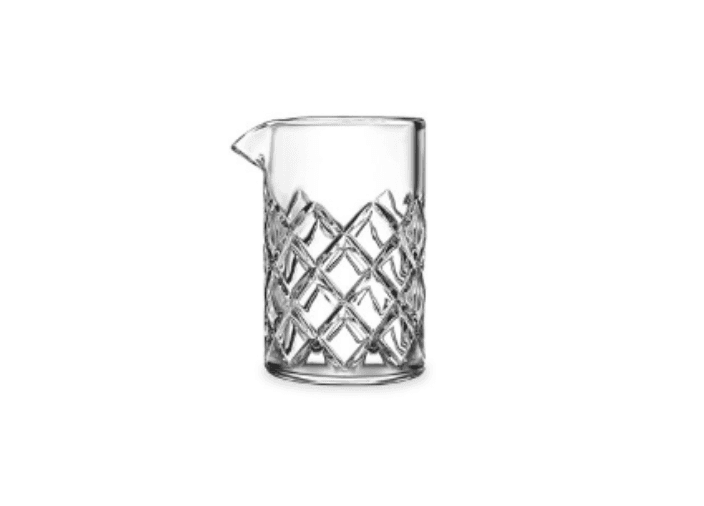
Japanese Mixing Glass
A blanket term for several styles of mixing glass originally popularised by Japanese bartenders. Usually straight sided, fairly wide and heavily weighted and featuring a beaker-style pour spout.
The standard width throughout allows easy, graceful movement of the bar spoon while the additional weight means they are more stable on the bar counter. The iconic design is the Yarai, featuring a distinctive diamond pattern cut into the glass. Several other styles are however available ranging from various sizes and glass patterns to seamless construction and, more recently, even stainless-steel versions to avoid breakage.
Pros: Elegant, smoother stirring, easy pouring from integrated spout
Cons: Fragile, expensive
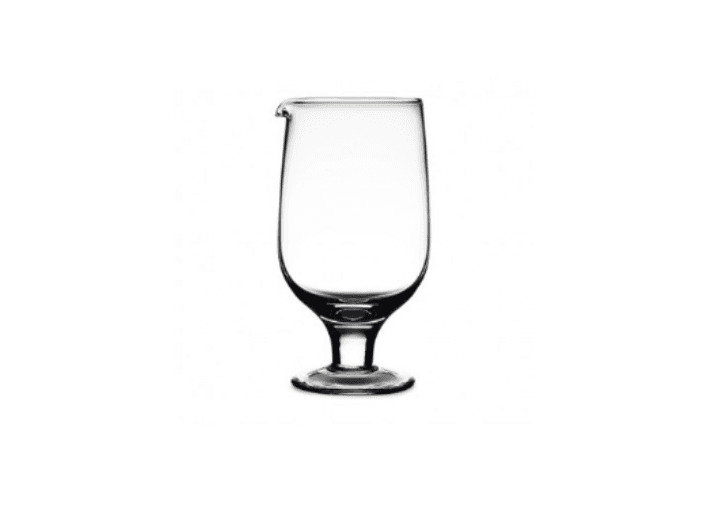
Stemmed Mixing Glass
Originally, simply a repurposing of a stemmed beer glass, by the late 19th century, the Stemmed Mixing Glass was the standard vessel for the preparation of stirred drinks. However as with many other golden age relics, they did not survive Prohibition. (Wondrich, 2007) The 21st century cocktail renaissance revived interest in forgotten, vintage barware and they are once again a more common sight in high-end cocktail bars.
Pros: Elegant, easy pouring from integrated spout
Cons: Fragile, expensive, less stable than flat-bottomed mixing glasses
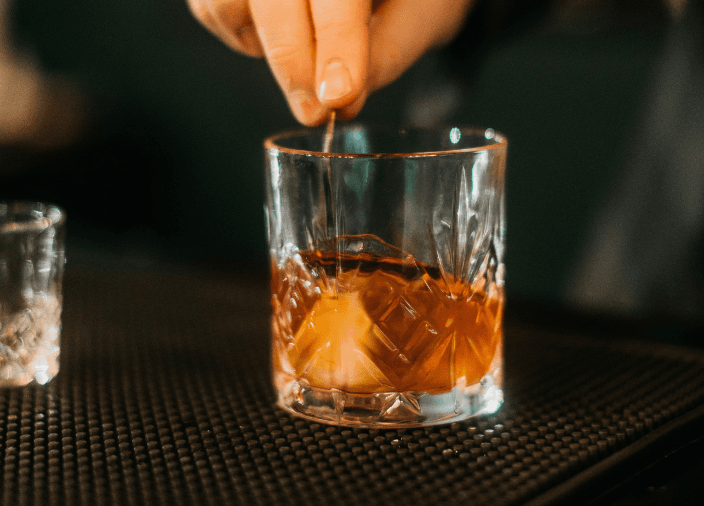
The Art of the Stir
Unlike shaking, stirring in a mixing glass offers a gentler integration of ingredients, preserving the clarity and texture of spirit-forward drinks. Here are some best practices:
- Fill Appropriately: Begin by filling your mixing glass with ice - usually two-thirds full. This ensures proper dilution and chilling.
- Stir with Precision: Use a long bar spoon, and ensure a smooth, consistent motion. Stirring isn't just about mixing; it’s about mastering the rhythm to achieve the perfect dilution and temperature.
- Pour with Grace: After stirring, use a julep or Hawthorne strainer to pour the cocktail into the serving glass. The pouring should be smooth and steady, ensuring no ice or other residue enters the final drink.
- Care & Maintenance: Mixing glasses, especially the delicate Yarai, demand care. Always hand wash with warm water and mild soap and store them in places where they won't easily tip or fall.
Key Takeaways
- Mixing glasses became a fundamental bar tool due to the rise of cocktail culture in the late 19th and early 20th century.
- As cocktails continued to boom, bartenders sought out ways to improve both the quality of serve and the experience of customers.
- This led to the evolution of multiple styles of mixing glasses, each designed to suit a specific purpose or aesthetic.
- Today, these remain a fundamental tool for every great cocktail bartender.
Receive regular industry news, recipes and inspiration direct to your inbox for free when you sign up to the Diageo Bar Academy newsletter.
